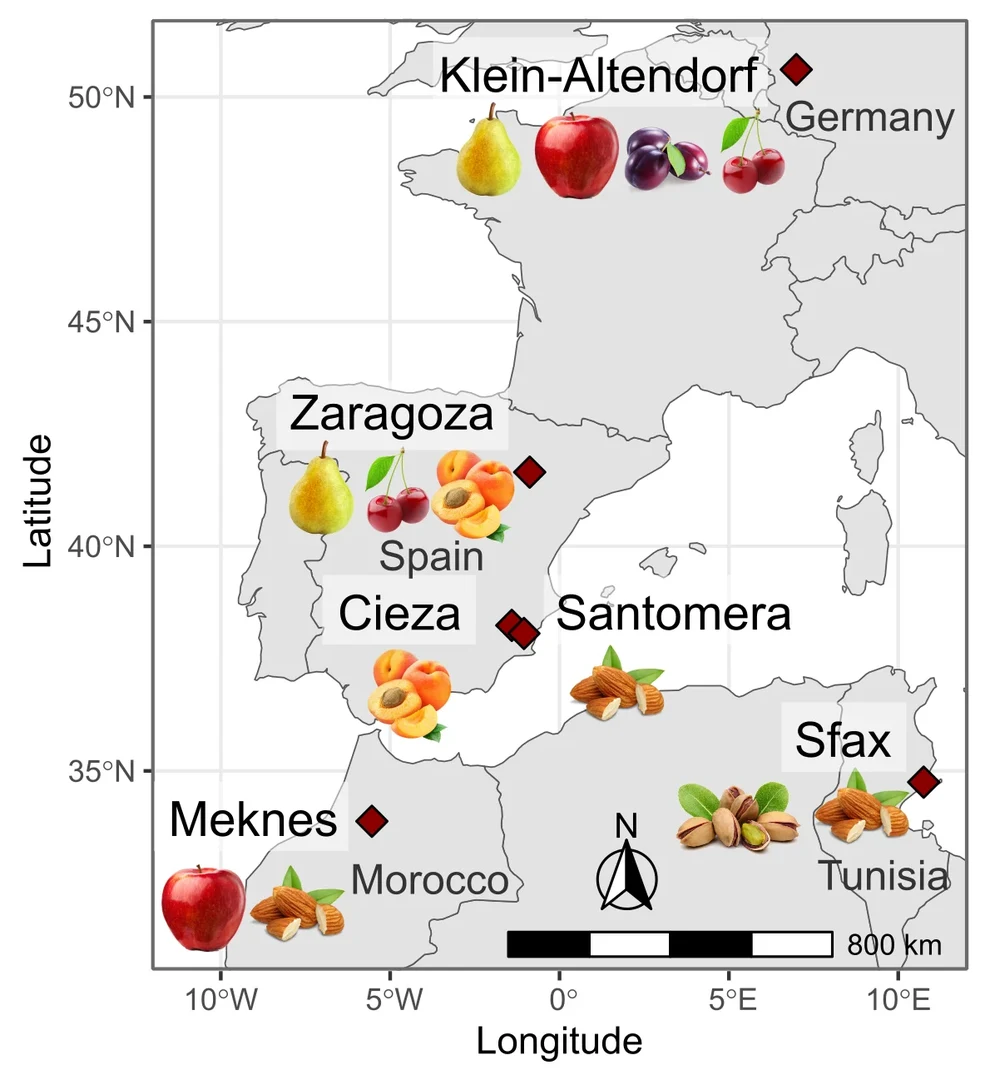In a new study, we modeled the bloom of several temperate fruit tree and nut tree species across the Mediterranean region and in west Germany und current conditions and future conditions. The paper is a result of the AdaMedOr project (Adapting Mediterranean Orchards).
In the paper, we analysed phenology data compiled by the consortium members. Our analysis included seven species: applel, pear, apricot, sweet cherry, plum, pistachio and almonds. In total, we analyzed data from 110 cultivars, for which we calibrated the PhenoFlex model and then projected changes in bloom dates and potential failures to bloom due to unmet chilling requirements.
We observed contrasting responses to the overall warmer conditions, indicating that shifts in bloom dates are specific to both cultivar and local climate. We projected generally earlier bloom dates for westerm Germany, relatively stable bloom dates in northern Spain and delayed bloom for most species in southern Spain, northern Morocco and central Tunisia. The heatmap below indicates the cultivar-specific responses for the different location.

In the figure above, projected shifts in bloom date compared to baseline conditions are represented by a color code. Green indicates unchanged bloom dates, blue color indicates earlier bloom and red indicates later bloom dates compared to baseline conditions. The coloumns correspond to future time points (2050, 2085), the climate scenarios (SSP1 to SSP5) are indicated on the x-axis with cultivar names on the y-axis. Locations are indicated in the grey boxes. When the model indicates high risk of bloom failure (>50%), then it is indicated by an 'x' inside the colored cell.
While trends are mostly consistent within each species and location, differences among czutliavrs highlight opportunities for climate change adaptation through cultivar selection.
For more information, please check out our open-acess publication:
Caspersen, L., Schiffers, K., Picornell, A., Egea, J.A., Delgado, A., El Yaacoubi, A., Benmoussa, H., Rodrigo, J., Fadón, E., Ben Mimoun, M., Ghrab, M., Kodad, O., Ruiz, D., Luedeling, E., 2025. Contrasting Responses to Climate Change – Predicting Bloom of Major Temperate Fruit Tree Species in the Mediterranean Region and Central Europe. Agricultural and Forest Meteorology 375, 110859. https://doi.org/10.1016/j.agrformet.2025.110859
About AdaMedOr
The Adapting Mediterranean Orchards project links expert knowledge on temperate fruit tree cultivation across four countries: Morocco, Tunisia, Spain and Germany. The project is funded by Partnership for Research and Innovation in the Mediterranean Area (PRIMA) and various national donors. Partnering insitutions, next to the HortiBonn team, include:
- The Spanish National Research Council, Center for Edaphology and Applied Biology of Segura (CEBAS-CSIC)
- Centro de Investigación y Tecnología Agroalimentaria de Aragón
- National Agronomic Institute of Tunisia
- Olive Institute
- Ecole National d’Agriculture de Meknès
- University Sultan Moulay Slimane, Superior School of Technology Khenifra
- Agromillora Méditerranée
